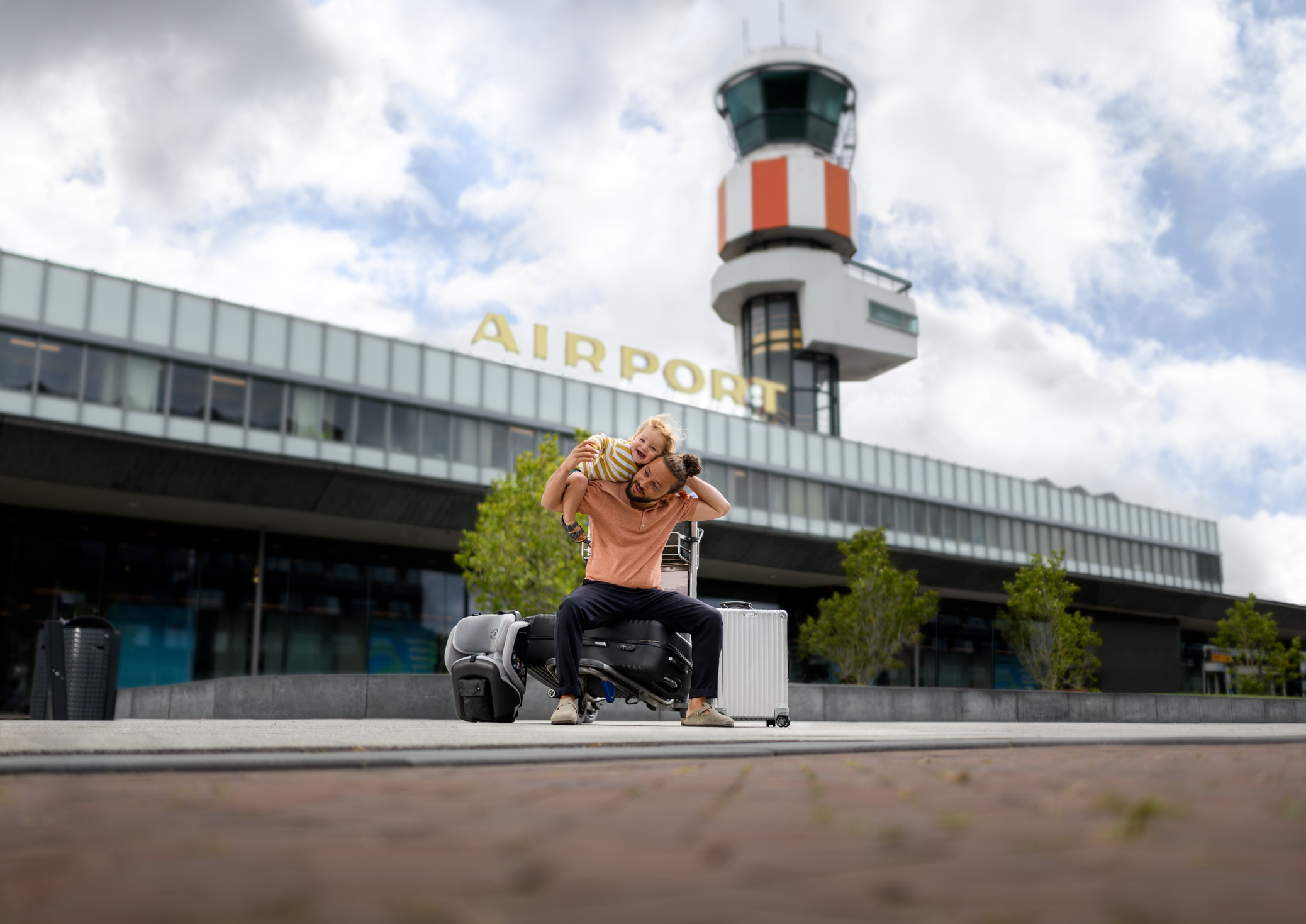Flying with a baby
Having a baby is no reason to slow down your love of travel. Many parents discover it's the best time to take a trip as children under two years old often travel and stay for free or at reduced rates. With a little bit of planning, you can help to make sure that everything goes as smoothly as possible. And that means you can concentrate on enjoying quality time together as a family discovering new places.
To help you to get ready, here’s the lowdown on aeroplane travel with a baby and our top tips for flying with a baby.


Travelling with baby checklist
Booking the flights
Think about what flights will be easiest to manage with your baby.
- A direct flight is the fastest way to get somewhere.
- Breaking up a long journey with a stopover can be more relaxing.
- A night flight might mean that your baby can sleep through.
- Some flight options may be more expensive, but worth it to keep the children happy and comfortable and you stress-free.
- If you book an aisle seat, it will be easier for you to get up and walk about if you need to settle your baby.
Tips for travelling with a baby: what to pack
Sit down and think about what you might need during a typical day and note items you can’t do without. Remember flights can be delayed, so don’t assume you will always arrive at your destination on time.
Aim to have all the must-haves with you during the flight, but try to travel as light as possible as it will make life easier at security and getting around the airport.
- Packing snacks for the journey can be a real lifesaver if you've started weaning. Your baby may not like the snacks available on the plane or in the airport, so bring along some bags or pouches of their favourite foods.
- Make sure you check on any food import restrictions at your destination first.
- Bring toys to keep your baby entertained or offer comfort.
- Bring a spare top for you and clothes for your baby, just in case you need to change.
At the airport
- Remember to tell check-in if you plan to take your buggy right up to the boarding gate. Some pushchairs have travel bags, or you can use beach towels as a protective wrap while they’re in the hold.
On the plane
Pressure can build up in your baby’s ears during the ascent and descent, causing pain.
- Encourage your baby to drink and swallow when taking off and landing to help avoid pressure pain in their ears. You can nurse them or give them a bottle or soother.
- Distracting your baby with a favourite toy can also help to keep them calm.
Can I take a car seat on the flight?
Taking your car seat on the flight can help your baby to travel safely and comfortably. Most airlines will let you bring your baby car seat as long as it is an FAA or TÜV- approved seat. It’s always worth checking with your airline first. Find out more here.
- Using your car seat lets your baby travel comfortably in familiar surroundings, which can help them to stay calm.
- Remember, if you want to use your car seat, you'll need to book a seat for your baby. Speak to the airline to ask about reduced rates.
Travelling with baby tip
Even if you don’t want to use your car seat when you are flying with your baby, you may need it if you'll be continuing your journey by car when you arrive. Car seats can be hired at your destination, but you may prefer to use your own for your peace of mind. Most airlines will let you check a car seat into the hold for free in addition to your baggage allowance. Check with them first.
- In most countries, the law says you must use an approved car seat for children up to a height of 1.35 meters or up to 12 years old. Some countries specify your child needs to use a car seat until they are at least 1.5 meters tall. Always check before you travel.
Car seat comfort
If your child is ready for a bigger car seat it may be a good idea to switch before your holiday so their journey is as comfortable as possible. If you're planning a trip with an older child, read our top tips for flying with a toddler.
Happy holidays!